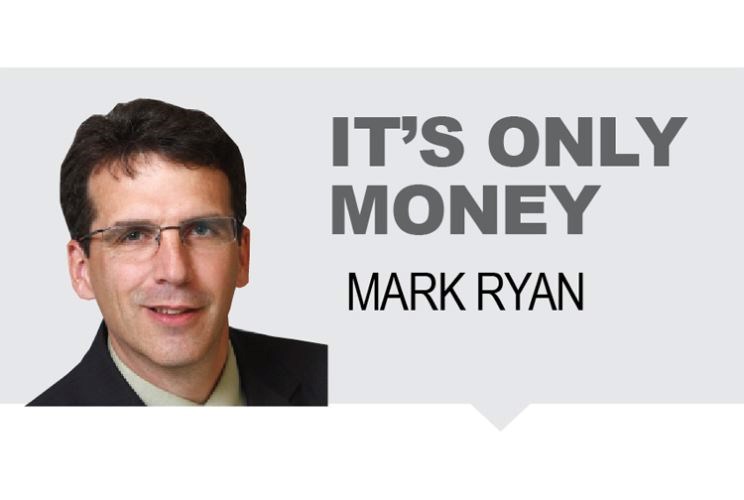We were being transferred from Prince Rupert to Cranbrook, (the armpit of B.C. to the left toe) which required a stopover in Vancouver. My first bank posting to my second meant a momentary a luxury for us, staying in a hotel on the company dime. But by the time we gave up possession of our home in Prince Rupert, all three of our little girls were flat on the floor, covered in red spots, and ragdoll sick.
"Hey, you said your kids have the chickenpox, right? And still infectious? Perfect! When you're in town, we will come over to the hotel and let them play together."
It sounded crazy when our friends wanted to meet up at a Vancouver hotel to rub up against our infectious critters, but it was considered an inoculation of sorts. Get them exposed to the virus as young children, or even babies, and the symptoms of the outbreak are relatively mild. Then their immunity would be established, and their children better off for it thereafter.
This memory came to mind today when I was reading an RBC economic report on the U.S. Fed's decision to extend its loosening trend on interest for the next while. They are trying to keep the economy form catching a cold, but the nagging fear is whether they're just cooking up a batch of pneumonia. Let's hope not.
This week we get a few tidbits from RBC Economics, looking at what sort of market the summer gave us.
Fed cuts rates again
Last week's rate cut was widely expected as the Fed continued its "mid-cycle" policy adjustment (i.e. more than one cut, but not an extended easing cycle). The key question is how much further that adjustment, framed as insurance against risks from trade tensions and slowing global growth, will go. The middle-ish point of fed-head opinions suggest of no further cuts (or hikes) through the end of next year. But that masks significant divergence among committee members with seven expecting one more cut this year, five looking for no change, and five thinking a rate hike would be appropriate by year end. Lack of unity might explain why the policy statement was little changed, simply reiterating that the Fed will "act as appropriate to sustain the expansion."
Our forecast assumes the Fed will lower rates once more this year. A total of 75 basis points of cuts would be consistent with mid-cycle easing in 1995 and 1998. Whether the Fed makes that additional move will depend on how the balance of risks around the economic outlook evolves into year end. Geopolitical risk has gone both ways recently, with the U.S. and China restarting trade talks but tensions in the Middle East rising and Brexit no closer to being resolved.
Domestically, more reports like yesterday's IP numbers (manufacturing +0.5 per cent in August) would help alleviate concerns about the health of the U.S. industrial sector, with the key worry being that weakness there spills over into the broader economy. More clarity on these issues would help the divided Fed reach a consensus.
Canadian retail sales
still soft in July
The headline sales increase in July was the first in three months and, excluding price impacts, volume sales were unchanged, both from a month earlier and from year ago levels. Flat volume sales from a year ago compare with, ostensibly, strong growth in household purchasing power over the last year. Employment was up two per cent from a year ago in July, wage growth was well-above the rate of inflation, and external trade risks have pushed interest rates sharply lower. All of that should be boosting household purchasing power, and consumer confidence levels remain around cycle-highs.
And, indeed, the broader household spending backdrop arguably still has looked a little better recently. Overall consumer spending growth outperformed the retail sale numbers over the first half of this year. E-commerce sales, not all of which are included in the headline retail sales number, were up 32.8 per cent in July. And housing markets have firmed with home resales increasingly appearing to have passed their near-term bottom in the spring. We expect household spending will continue to grow at a respectable, if unspectacular, pace over the second half of this year. And that will probably be needed given still elevated uncertainties about the potential for international trade disruptions to spill over into slower Canadian manufacturing sales activity.
Canadian inflation continues to tread water
Headline inflation crept lower over the last three months as consumers got a break on gasoline prices over the summer. Meanwhile, underlying inflation continues to hum along at two per cent, making the Bank of Canada the envy of its global peers. With the Fed set to lower borrowing costs again today (and potentially leave the door open to another cut) the Bank of Canada might just end the year with the highest policy rate in the G7. Inflation would be a key reason for that. For consumers, the combination of steady inflation and accelerating wage growth is good news. Of course, other pressures like housing affordability aren't captured well in the CPI, so not all households will be feeling an increase in purchasing power.
Mark Ryan is an investment advisor with RBC Dominion Securities Inc. (Member-Canadian Investor Protection Fund), and these are Ryan's views, and not those of RBC Dominion Securities. This article is for information purposes only. Please consult with a professional advisor before taking any action based on information in this article. See his website at: http://dir.rbcinvestments.com/mark.ryan.



